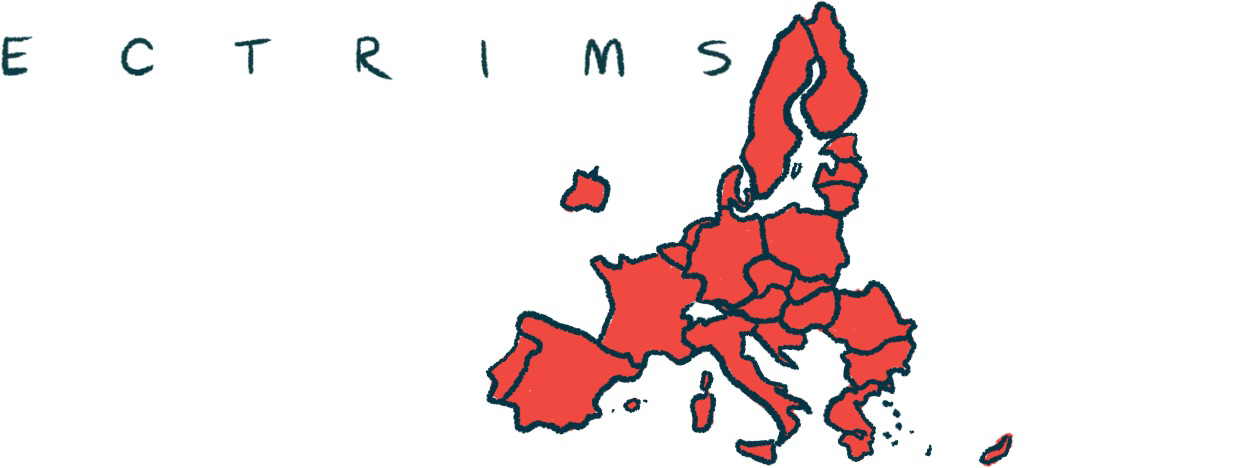#ECTRIMS2022 – 2-year Ocrevus Effective for Early MS Patients: Data
Nearly 80% of treated early RRMS patients show no disease activity over 2 years
Written by |

Nearly 80% of people with early-stage relapsing-remitting multiple sclerosis (RRMS) show no evidence of disease activity after two years of treatment with Ocrevus (ocrelizumab), according to updated data from the ENSEMBLE Phase 3b trial.
More than 88% of the patients were negative for MRI activity, meaning they had no new or enlarging lesions or lesions with active inflammation. Over 90% also had no relapses or confirmed disability progression at two years.
The safety profile of Ocrevus, marketed by Genentech, a member of the Roche Group, was consistent with that reported in previous multiple sclerosis (MS) trials.
“With over 250,000 people treated with Ocrevus, we continue to see significant reductions in MS disease progression balanced with favorable safety,” Levi Garraway, MD, PhD, Genentech’s chief medical officer and head of global product development, said in a company press release. “We are also focused on remaining unmet needs — such as earlier diagnosis and treatment — which is critical to ensure patients are receiving the most appropriate treatment.”
These findings, along with additional clinical trial and real-world safety data, were presented by Genentech in two posters at the 38th Congress of the European Committee for Treatment and Research in Multiple Sclerosis (ECTRIMS), being held Oct. 26–28 both virtually and in Amsterdam, the Netherlands.
Ocrevus is an approved MS treatment designed to kill B-cells
Ocrevus is approved for relapsing forms of MS and primary progressive multiple sclerosis (PPMS). Administered directly into the bloodstream twice a year, it works by killing B-cells, a type of immune cell involved in the abnormal immune attacks that drive MS.
In clinical trials, Ocrevus has been shown to reduce the rate of MS relapses and ease disability. But starting treatment with high-efficacy therapies such as Ocrevus in the earliest stages of disease may be associated with even better outcomes and long-term clinical benefits.
This was what Hans-Peter Hartung, MD, a professor of neurology at the Heinrich Heine University Düsseldorf, showed in the poster “Treatment-naive patients with early-stage relapsing-remitting multiple sclerosis showed low disease activity after 2-year ocrelizumab therapy, with no new safety signals; the Phase IIIb ENSEMBLE study.”
The international ENSEMBLE trial (NCT03085810) is evaluating the safety and effectiveness of Ocrevus over four years in 1,225 adults (784 women and 441 men) with early-stage RRMS, or a disease duration of up to three years, who had received no prior treatment.
Participants, with a median age of 32 years, had experienced their first MS symptom less than one year prior to entering the study and had their diagnosis less than three months. Most participants (75.4%) had experienced both relapses and MRI-based disease activity in the year prior to enrollment.
The trial’s main goal was to assess the proportion of patients with no evidence of disease activity (NEDA) — a status defined by the absence of relapses, new or enlarging brain lesions, and six-month confirmed disability progression — at two years of treatment.
Other goals included annualized relapse rate (ARR), disability progression — as assessed with the Expanded Disability Status Scale (EDSS) — and safety measures.
Most patients (95.8%) remained on treatment for at least two years.
Two years of Ocrevus led to high rate of no disease activity
Consistent with one-year findings, two years of Ocrevus treatment was associated with a high rate of NEDA, being achieved by 77.3% of patients. Notably, 93.4% of patients had no relapses, and 90.7% experienced no confirmed disability progression. Also, 92.7% had no new or enlarging lesions in the brain or spinal cord, and 93.3% had no inflammatory lesions.
Both the adjusted ARR and the mean EDSS scores were lower with Ocrevus treatment. At two years, patients experienced a mean of 0.033 relapses per year, compared with 1.23 relapses per year before starting on Ocrevus. For most patients (87.4%), the EDSS score remained stable or improved, indicating less disability.
“Safety results were consistent with prior [Ocrevus] studies, with no new safety signals,” the researchers wrote, adding that study discontinuations due to safety reasons were low (0.7%).
Infections were reported by 62% of patients and serious infections by 2.7%. A total of 32 patients (2.6%) had COVID-19, which led to two of the three deaths that occurred during the study to date.
“In the ENSEMBLE study of treatment-naive patients with early-stage RRMS, disease activity based on clinical and MRI measures was minimal in most patients treated with [Ocrevus] over 2 years,” the researchers wrote.
In the second poster, “Safety of ocrelizumab in multiple sclerosis: Updated analysis in patients with relapsing and primary progressive multiple sclerosis,” researchers provided evidence of Ocrevus’ long-term favorable safety in MS patients.
They analyzed safety data of up to nine years of treatment with Ocrevus from a total of 11 ongoing clinical trials and open-label extension studies involving relapsing MS and PPMS patients.
As of November last year, 5,848 MS patients had been treated with Ocrevus, and about half had received at least eight doses of the therapy. This represented a total of 25,153 patient-years of exposure.
Patient-years, or PY, is a measure of the number of people participating in a study and the amount of time they were followed. For example, 100 PY refers to data gathered from 100 patients who were followed for one year or from one patient followed for 100 years.
Results showed that reported rates of adverse events over nine years of treatment remained generally consistent with those reported for the trials’ controlled-treatment period, in which Ocrevus was compared against active treatment or a placebo.
The COVID-19 pandemic resulted in a slight increase in the rate of adverse events, serious adverse events, infections, and serious infections due to COVID-19.
When excluding such cases, rates of serious infections “remained low and within the range reported in real-world registries,” and no new patterns of such infections were identified in relapsing MS or PPMS patients, the researchers wrote.
Rates of all cancers and breast cancer among Ocrevus-treated patients also remained within the range reported for MS patients in real-world registries.
The findings highlight that “over a 9-year follow-up period, no new (with the exception of COVID-19 type of infections) or unexpected safety signal was seen in patients treated with [Ocrevus] in ongoing clinical trials,” the researchers wrote.
Ocrevus “continues to exhibit a stable and favorable safety profile,” they added.
As of March 2022, more than 250,000 MS patients globally started Ocrevus treatment after its approval. Ocrevus’ long-term safety will continue to be monitored in clinical trials and in the real-world setting.
Note: The Multiple Sclerosis News Today team is providing in-depth coverage of the ECTRIMS Forum 2022 Oct. 26–28. Go here to see the latest stories from the conference.







